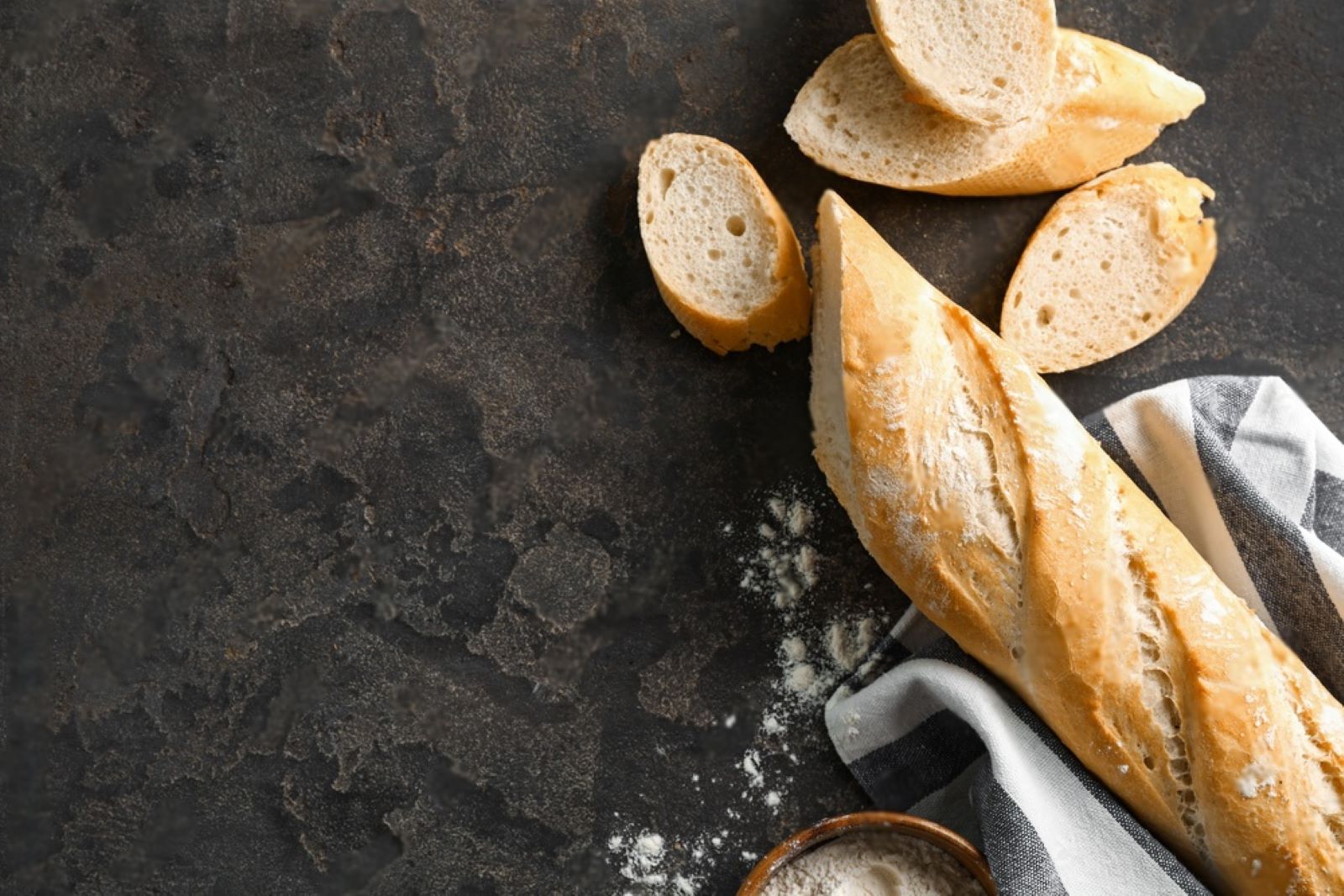
French bread, with its crisp golden crust and soft, chewy interior, is a beloved staple in French cuisine and a favorite worldwide. Whether enjoyed fresh from the bakery or used to make sandwiches, bruschetta, or garlic bread, French bread is a versatile and delicious addition to any meal. However, if you have leftover French bread or want to stock up for later use, freezing is a practical solution. Freezing French bread allows you to preserve its freshness and taste, ensuring that you can enjoy its delightful flavors even days or weeks later. In this guide, we will explore the best practices for freezing French bread, including proper packaging, storage techniques, and thawing instructions, so you can always have a supply of this iconic bread on hand to complement your meals. Join us as we uncover the secrets of freezing French bread and embrace the convenience of having this classic bakery treat readily available, allowing you to savor its irresistible aroma and taste whenever the craving strikes.
Here are the simple steps to freeze french bread:
Step 1: Select Fresh French Bread
Choosing a high-quality French bread loaf is essential when preparing to freeze it. Look for a loaf that is fresh and free from any signs of spoilage, such as mold, discoloration, or a stale aroma. Freshness is key to ensuring that the bread maintains its taste and texture after freezing.
When selecting French bread for freezing, it’s also recommended to opt for a loaf that is not excessively crusty. While a crispy crust is one of the highlights of French bread, it can become too hard and lose its desirable texture when frozen. So, a loaf with a slightly softer crust is preferable for freezing.
By starting with a fresh and less crusty French bread loaf, you increase the chances of preserving its quality during the freezing process. This step sets the foundation for enjoying delicious French bread even after it has been frozen and thawed.
Step 2: Prepare the Bread for Freezing
Before freezing French bread, it’s important to prepare it appropriately to ensure convenience and ease of use when thawing and consuming later. If the French bread is not already pre-sliced, follow these steps to prepare it for freezing:
- Gather a sharp knife: Use a knife with a serrated or sharp blade. This will help you cut through the bread without squishing or compressing it.
- Determine portion sizes: Decide on the desired portion sizes or slices based on your preferences and future usage. It’s recommended to cut the French bread into individual serving-sized portions or slices. This allows for easier thawing and avoids the need to thaw the entire loaf if you only require a small portion.
- Start slicing: Place the French bread on a clean cutting board or surface. Hold the loaf firmly with one hand while using the other hand to carefully slice through the bread with the knife. Use a gentle sawing motion to avoid compressing the bread.
- Maintain consistency: Try to maintain uniform thickness while slicing. This helps ensure even thawing and consistent texture when you later consume the frozen bread.
By cutting the French bread into individual serving-sized portions or slices, you simplify the process of thawing and using the bread later. This way, you can easily retrieve and thaw only the amount you need, without having to defrost the entire loaf. It also helps preserve the bread’s texture and flavor, as smaller portions tend to thaw more evenly.
Step 3: Wrap the Bread Securely
To protect the French bread from freezer burn and maintain its freshness, it’s crucial to wrap each portion or slice securely. Follow these steps to wrap the bread properly:
- Prepare plastic wrap: Cut a piece of plastic wrap that is large enough to completely cover the portion or slice of French bread. It should have some excess on all sides for better sealing.
- Place the bread on plastic wrap: Put the portion or slice of French bread in the center of the plastic wrap, ensuring it is positioned lengthwise.
- Start wrapping: Take one side of the plastic wrap and bring it over the bread, tucking it underneath. Then, repeat the process with the opposite side. Make sure the bread is completely covered and there are no exposed areas.
- Seal the ends: Take the excess plastic wrap from both ends and twist them tightly, similar to closing a candy wrapper. This helps to create a tight seal and prevent air from entering, reducing the risk of freezer burn.
- Double-check for gaps: Inspect the wrapped bread to ensure there are no gaps or openings in the plastic wrap. Any exposed areas can lead to moisture loss or the introduction of freezer odors, affecting the quality of the bread.
By wrapping each portion or slice of French bread tightly and securely in plastic wrap, you create a barrier against air and moisture, which helps to prevent freezer burn. Properly sealed packaging preserves the bread’s texture, flavor, and overall quality during freezing.
Step 4: Double-Wrap for Added Protection
To further safeguard the French bread from freezer burn and maintain its moisture content, it is advisable to double-wrap the portions or slices using aluminum foil. Follow these steps to add an extra layer of protection:
- Prepare aluminum foil: Cut a sheet of aluminum foil large enough to wrap around the plastic-wrapped portion or slice of French bread. Ensure that there is enough excess foil to fully enclose the bread.
- Place the plastic-wrapped bread on the foil: Position the plastic-wrapped portion or slice of French bread in the center of the aluminum foil, lengthwise.
- Wrap with aluminum foil: Fold one side of the aluminum foil over the bread, covering it completely. Then, fold the opposite side over the bread, ensuring it overlaps and seals tightly. Repeat the process for the ends, folding them securely.
- Seal the foil-wrapped bread: Gently press the foil around the bread to create a snug and secure wrapping. This helps to eliminate any potential air pockets and provides an added layer of insulation.
By double-wrapping the plastic-wrapped portions or slices of French bread with aluminum foil, you create an additional protective barrier against air and moisture. The foil acts as a barrier to prevent freezer burn and helps to maintain the bread’s moisture content during freezing. This extra layer of wrapping enhances the preservation of the bread’s freshness, texture, and flavor, ensuring a delightful experience when it’s time to thaw and enjoy the frozen French bread.
Step 5: Arrange the Wrapped Bread in a Freezer-Safe Bag
After securely wrapping the portions or slices of French bread, it’s important to store them properly to maintain their quality. Follow these steps to arrange the wrapped bread in a freezer-safe bag:
- Select a freezer-safe bag: Choose a bag specifically designed for freezer storage. Freezer-safe bags are made of thicker material that provides better protection against freezer burn.
- Open the bag: Open the freezer-safe bag and ensure that it is clean and free of any debris or contaminants.
- Place the wrapped bread in the bag: Carefully place the individually wrapped portions or slices of French bread into the bag. Arrange them in a single layer if possible, without overlapping, to promote even freezing.
- Remove excess air: Press gently on the bag to squeeze out as much air as possible before sealing it. Removing excess air helps to prevent the bread from becoming stale and reduces the risk of freezer burn.
- Seal the bag securely: Once the air is removed, seal the freezer-safe bag tightly to create an airtight seal. Double-check that there are no gaps or openings that could allow air or moisture to enter.
By placing the individually wrapped portions or slices of French bread in a freezer-safe bag, you provide an additional layer of protection against freezer burn and maintain the bread’s freshness. Removing excess air from the bag helps to prevent the bread from becoming stale and ensures better preservation. Properly sealing the bag ensures an airtight environment, safeguarding the bread during its time in the freezer.
Step 6: Label and Date the Bag
Properly labeling the freezer-safe bag containing the wrapped French bread is an important step to maintain organization and keep track of its freshness. Follow these steps to label and date the bag:
- Retrieve a marker: Grab a permanent marker that will write clearly on the surface of the freezer-safe bag.
- Write the date of freezing: On the bag, write the date when you are placing the French bread in the freezer. This helps you keep track of how long the bread has been frozen and ensures you use the oldest bread first for optimal freshness.
- Include a description: Write a brief description on the bag, such as “French bread” or “Frozen French bread.” This description will make it easier to identify the contents of the bag without having to open it.
- Additional information (optional): If desired, you can add any additional information that may be helpful, such as the number of portions or slices in the bag, special seasonings or flavors, or any specific instructions for thawing or reheating.
- Ensure legibility: Make sure that your labeling is clear and legible. Avoid using fading or smudging markers that may become illegible over time.
By labeling and dating the bag, you establish a system for easy identification of the frozen French bread in your freezer. This ensures that you can quickly locate and use the bread when needed, while also keeping track of its freshness and maintaining a well-organized freezer storage.
Step 7: Freeze the French Bread
Once you have properly prepared and labeled the bag of wrapped French bread, it’s time to place it in the freezer for storage. Follow these steps to freeze the French bread effectively:
- Choose a freezer location: Select a suitable spot in your freezer where the bag can be stored securely without being disturbed or crushed by other items. Ideally, find a flat surface or an area where the bag can lie undisturbed.
- Position the bag flat: Lay the sealed bag of French bread flat in the chosen freezer location. Ensure that the bag is placed in a position where it won’t be easily shifted or moved around.
- Avoid stacking or overcrowding: It’s important to avoid stacking other items on top of the bag or overcrowding it with other frozen goods. This prevents the bread from getting squished or misshapen during freezing.
- Maintain proper temperature: Make sure that your freezer is set to the appropriate temperature for freezing, typically around 0°F (-18°C) or below. This ensures optimal preservation of the French bread’s quality.
By placing the sealed bag of French bread flat in the freezer and avoiding stacking or overcrowding, you maintain the integrity of the bread’s shape and texture during freezing. Storing the bag in a stable position helps to prevent the bread from being squashed or deformed by other items in the freezer. Keeping the freezer at the correct temperature ensures that the French bread freezes properly and maintains its quality until you’re ready to thaw and enjoy it.
How long can french bread last in the freezer?
French bread can last in the freezer for approximately 2 to 3 months while maintaining its quality. Beyond this timeframe, the bread may still be safe to consume, but it might experience some loss of flavor and texture. It is advisable to label the frozen bread with the date of freezing to keep track of its storage time.
Step 8: Thaw the French Bread
After freezing the French bread, when the time comes to enjoy it, proper thawing is crucial to preserve its texture and flavor. Follow these steps to thaw the frozen French bread:
- Plan ahead: Determine the quantity of French bread you wish to thaw. It’s best to thaw only the amount you need to avoid unnecessary waste.
- Remove from the freezer: Retrieve the desired portion or slice of frozen French bread from the freezer. Keep the remaining portions or slices stored in the freezer for future use.
- Unwrap the bread: Remove the aluminum foil and plastic wrap from the portion or slice of French bread. Be careful not to damage or crush the bread while unwrapping.
- Thaw at room temperature: Place the unwrapped French bread on a clean countertop or a cutting board at room temperature. Allow it to thaw naturally without applying heat. This process may take several hours, depending on the size and thickness of the bread.
- Preserve texture: Avoid using a microwave or oven for thawing, as these methods can result in a soggy or unevenly thawed texture. Thawing at room temperature allows the bread to gradually regain its desired texture and maintain its taste.
- Check for readiness: Gently press the thawed French bread with your fingers to ensure it has fully thawed. The bread should be soft and spring back slightly when touched.
- Optional reheating: If desired, you can briefly warm the thawed French bread in a preheated oven at a low temperature for a few minutes to regain a crusty exterior. Be cautious not to overheat, as it may lead to dryness.
By allowing the frozen French bread to thaw naturally at room temperature, you ensure that it regains its desired texture and taste. Avoiding the use of microwaves or ovens for thawing prevents a soggy or uneven result. Thawing the bread properly sets the stage for a delightful experience when enjoying the French bread, whether it’s for sandwiches, crostini, or alongside your favorite meal.
Other related questions
Can you refreeze french bread?
Refreezing French bread is not recommended as it can negatively impact its quality. Once French bread has been thawed, it is best to consume it within a short period to maintain its texture and flavor. If there are leftovers after thawing, it is advisable to store them in the refrigerator and consume them within a few days for optimal freshness.
How do I know if the french bread has gone bad after being frozen?
To determine if French bread has gone bad after being frozen, look for signs of spoilage such as mold, unusual discoloration, or a strong off-putting odor. Additionally, if the bread feels excessively dry or has a noticeably stale taste, it may have degraded in quality. Trust your senses and use your judgment; if in doubt, it’s best to discard the bread to ensure food safety.
Can I freeze french bread with toppings or fillings?
Yes, you can freeze French bread with toppings or fillings, but it is recommended to freeze them separately. To freeze French bread with toppings, it is best to assemble the bread without any condiments or sauces, wrap it tightly in plastic wrap or aluminum foil, and then place it in a freezer-safe bag or container. For freezing French bread with fillings, such as cheese or meat, it is advisable to pre-cook the filling and let it cool before adding it to the bread.
Can I freeze french bread rolls or buns?
Yes, you can freeze French bread rolls or buns. To freeze them, first, make sure they are fully cooled. Then, place the rolls or buns in a freezer-safe bag or container, removing as much air as possible. When ready to use, thaw the frozen rolls or buns at room temperature or in a preheated oven until they are soft and warmed through.
Can I freeze a whole french baguette?
Yes, you can freeze a whole French baguette. To freeze it, wrap the baguette tightly in plastic wrap or aluminum foil to prevent freezer burn and moisture loss. Place the wrapped baguette in a freezer-safe bag or container and store it in the freezer. When you want to use it, thaw the frozen baguette at room temperature or reheat it in a preheated oven for a few minutes until it is crispy on the outside and soft on the inside.








